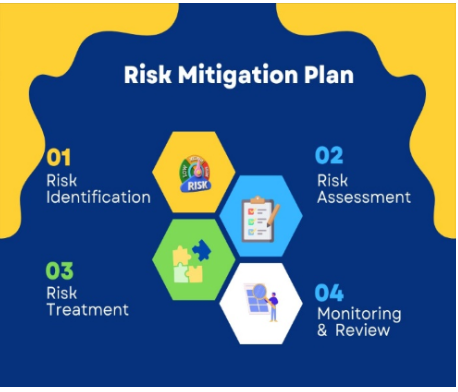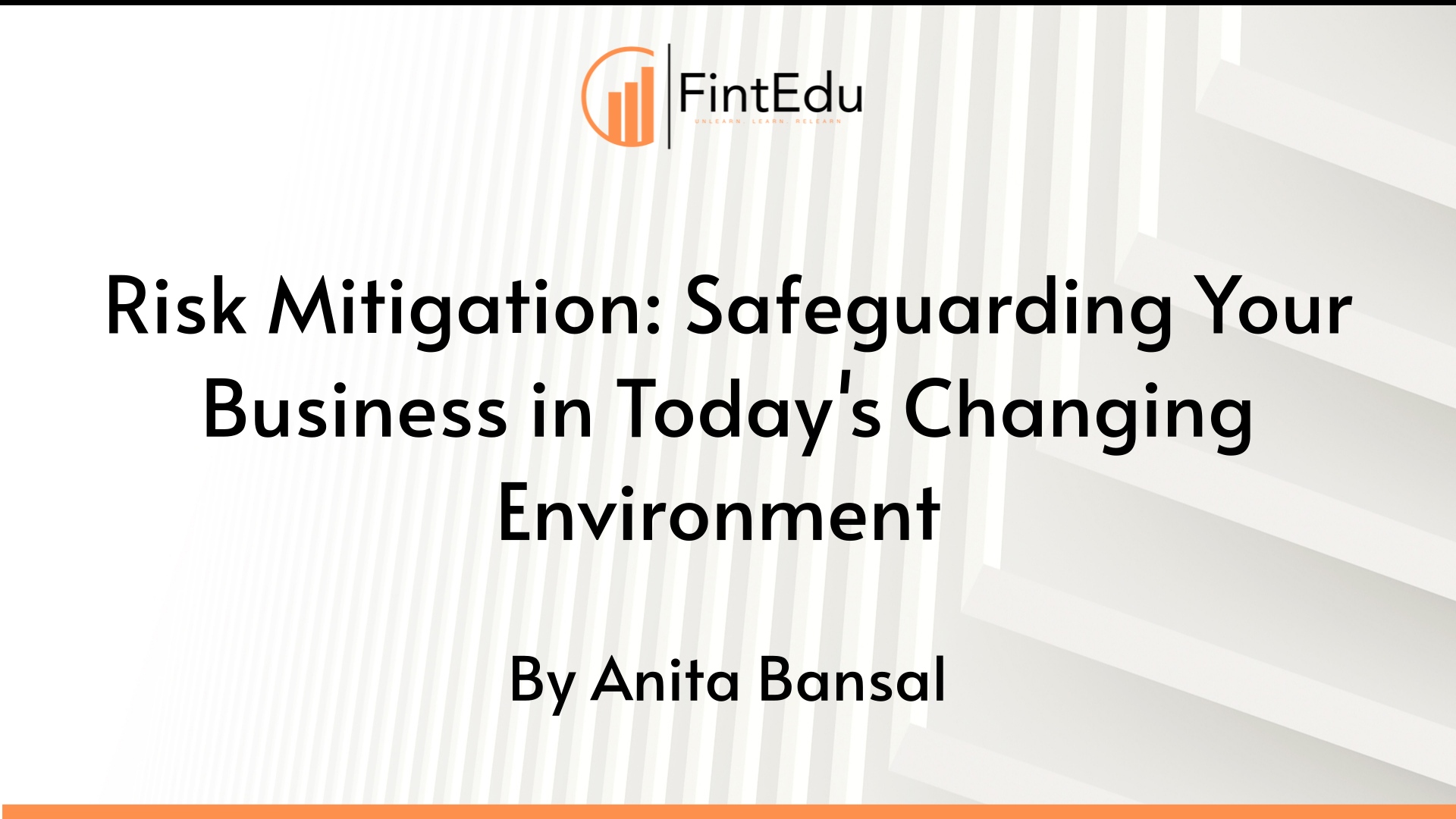LISTEN TO THIS ARTICLE
In the dynamic landscape of business, risk is an inherent factor that can significantly impact the success and growth of an organization. Risk mitigation, therefore, plays a important role in safeguarding businesses against potential threats and ensuring their capability in the case of adversity.
Since 2017, UAE has implemented many new tax and compliance practices such as VAT, Excise, ESR, UBO, AML and now Corporation taxes. These changes have inevitable effect on all the business in the UAE may it be small or big. Hence it is important to safeguard against the risk and have Risk mitigation Strategy.
This article is about the exploration of the concept of risk mitigation, its importance, types of risks, components of a risk mitigation plan, strategies, best practices, and its application in the current scenario of corporate taxes and VAT.
1. What is Risk Mitigation?
Risk mitigation is proactive approach that manages risks to reduce their impact. It is a process of identifying, assessing, and prioritizing risks, followed by the implementation of strategies to minimize, monitor, and control the impact or likelihood of these risks.
2. Why is Risk Mitigation Required?
Overlooking your business’s risks, won’t make them go away. Jumping into action without a plan to mitigate those risks can result in costly consequences for your bottom line – making proper Risk Mitigation is vital for any successful venture. Hence, risk mitigation is necessary for businesses to proactively manage uncertainties, protect assets, enhance decision-making, comply with regulatory requirements, and maintain stakeholder trust.
3.What are the Types of Risks?
- Financial Risks: To ensure ongoing profitability, businesses must proactively manage risks. Risk like market risk, credit risk, liquidity risk and operational risk have the potential to take a financial toll on any organization.
- Strategic Risks: Aggressively pursuing the wrong business strategy can result in a company facing strategic risks that may be difficult to overcome. Businesses must ensure their plans are sound and capable of delivering expected returns to minimize such risks.eg risk relating to competition, market trends, and changes in business strategy.
- Compliance Risks: Failure to comply with laws, regulations, and industry standards can have serious implications or repercussions which will expose business to heavy penalties and may impact their reputation.
- Reputational Risks: Reputation is a powerful asset for any company to carry. Thought it is not directly recorded in the financials but the risk associated with damage to the organization's reputation due to negative public perception can ruin their goodwill and erode investors’ confidence.
- Operational Risks: Risk stemming from internal processes, people, systems, or external events can make huge impact on the bottom line of the company. It is essential to manage these risk, else everyday activities can be disturbed and smooth business can’t be run
4. What are the Components of a Risk Mitigation Plan?

- Risk Identification: Identifying and categorizing risks based on likelihood and impact.
- Risk Assessment: Evaluating the significance of each risk to prioritize mitigation efforts.
- Risk Treatment: Developing and implementing strategies to mitigate, transfer, or accept risks.
- Monitoring and Review: Regularly reviewing and updating the risk mitigation plan to address emerging risks.
5. Strategies for Risk Mitigation
- Diversification: Spreading investments and operations across different assets or markets to reduce exposure to any single risk.
- Insurance: Transferring the risk to an insurance company through policies tailored to specific risks.
- Internal Controls: Implementing policies, procedures, and systems to prevent, detect, and mitigate risks.
- Contingency Planning: Preparing alternative courses of action to respond to potential risks.
- Risk Avoidance: Eliminating activities that could expose the organization to risk.
6. What are the Best Practices for Risk Mitigation?
Risk Mitigation strategies require a collaborative approach with stake holders to make its effective. To ensure successful implementation, fostering a culture that recognizes and manages risks by involving employees, managers, clients, union and stake holders at each process.
Risk management is core part of who organisation is hence implementing solid values, attitude and beliefs around compliance from top down is important. Regular reviews and training and awareness sessions are inevitable to ensure its effectiveness.
Apart from this, roles and responsibilities must be unmistakably established to guarantee successful risk management.
Last but not the least, Proactive risk monitoring is essential for continually improving a robust risk mitigation plan. Organizations can stay ahead of potential risks by clearly defining and enacting continual monitoring practices.
7. How risk mitigation can be applied in the Current Scenario of Corporate Taxes and VAT and other compliances?
In the current business environment, organizations are faced with various risks related to corporate taxes and VAT. These risks include non-compliance with tax laws, changes in tax regulations, and financial penalties. To mitigate these risks, businesses can adopt proactive measures such as:
- Regular Compliance Checks: Conducting regular audits to ensure compliance with tax laws and regulations.
- Tax Planning: Developing tax-efficient strategies to minimize tax liabilities while complying with laws.
- Technology Adoption: Using technology tools for tax compliance and reporting to improve accuracy and efficiency.
- Consulting Experts: Seeking advice from tax professionals to navigate complex tax laws and regulations.
In conclusion, risk mitigation is a critical aspect of business management that requires careful planning, implementation, and monitoring. By understanding the types of risks, developing a comprehensive risk mitigation plan, and adopting effective strategies and best practices, businesses can enhance their resilience and adaptability in an ever-changing business environment.
Disclaimer: Content posted is for informational and knowledge sharing purposes only, and is not intended to be a substitute for professional advice related to tax, finance or accounting. The view/interpretation of the publisher is based on the available Law, guidelines and information. Each reader should take due professional care before you act after reading the contents of that article/post. No warranty whatsoever is made that any of the articles are accurate and is not intended to provide, and should not be relied on for tax or accounting advice.
Contributor
Related Posts

The UAE retail sector continues to experience significant regulatory evolution, particularly in the ...
Read More
The UAE has rapidly embraced FinTech and digital payment solutions, transforming how businesses and ...
Read More
Accountants in the UAE are deeply involved in the financial lifecycle of businesses. From structurin...
Read More